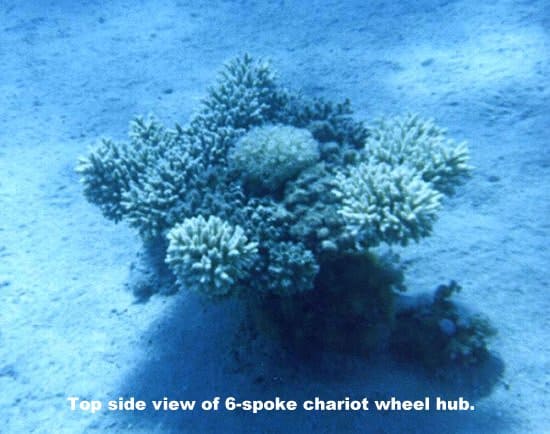December 1998 Dive Trip by Bill Fry
In December of 1998 I along with 8 other people including Ron Wyatt traveled to Nuweiba, Egypt on the Gulf of Aqaba to spend two days diving at the location where Moses and the children of Israel crossed the Red Sea on dry land.
Most of the group had dived at this spot at least once before. This was my first dive in that area as I had just obtained my diving certification in June. As a new diver and having never dove at this spot before, I was both thrilled and somewhat nervous at the prospects. Those of the group that I was traveling with all felt that something good was going to happen on this part of our trip. We just didn’t know what it would be.
On December 1st we got our gear together and traveled to the southern part of the beach near where Ron found the pillar in the surf. We hired an Egyptian man with a small boat to take us out about 1-2 km. into the Gulf. However, about 15 minutes after the first group dove, an Egyptian patrol boat pulled up and sent them back to shore. Our boat did not have the proper license so it could not be used. From that point on we had to rely on an inflatable raft that Ron had brought and simply diving from the shore.
I elected to do shore diving and let the more experienced divers explore the deeper (90-100 ft.) water. I was about to learn how physically challenging shore diving can be. However my dive partner (Tom Andrews) and I, were quickly rewarded on our first dive. About 200 feet out in shallow water we found a chariot axle sticking about 2 feet out of the sand with an intact wheel hub and spokes still attached.

Of course it was totally covered with coral but was isolated (by about 50 ft.) from any other coral formation. From its appearance and the orientation of the spokes, it appeared to be a 6-spoked wheel.

What was definitive about the artifact that made us confident that it was a chariot wheel and not some strangely shaped coral formation was that Tom had with him his underwater metal detector. The formation gave positive readings for metal at the axle, the hub and each of the intact spokes.


A number of the other divers saw and photographed various items that appeared to be wheels and cabs from chariots but their most astounding find was the top half of a coral encrusted human femur (upper leg) bone. Its shape was clear and distinctive.
It was virtually identical to a whole specimen that was found on Ron’s March 1998 dive at this same location. That artifact was tested and confirmed to be a “coralized human femur”. We also obtained photos and video of other bones laying on the bottom in piles either loose or imbedded into coral formations.
When I had originally planned this dive trip, I thought that a 3 day period would be plenty of time. I now realize that I should have set aside at least two more days but as it turned out everyone came away throughly convinced that they had been to the place where the miracle of the Red Sea occurred. What a rare privilege it was to view, first hand, the evidence that God has preserved.






